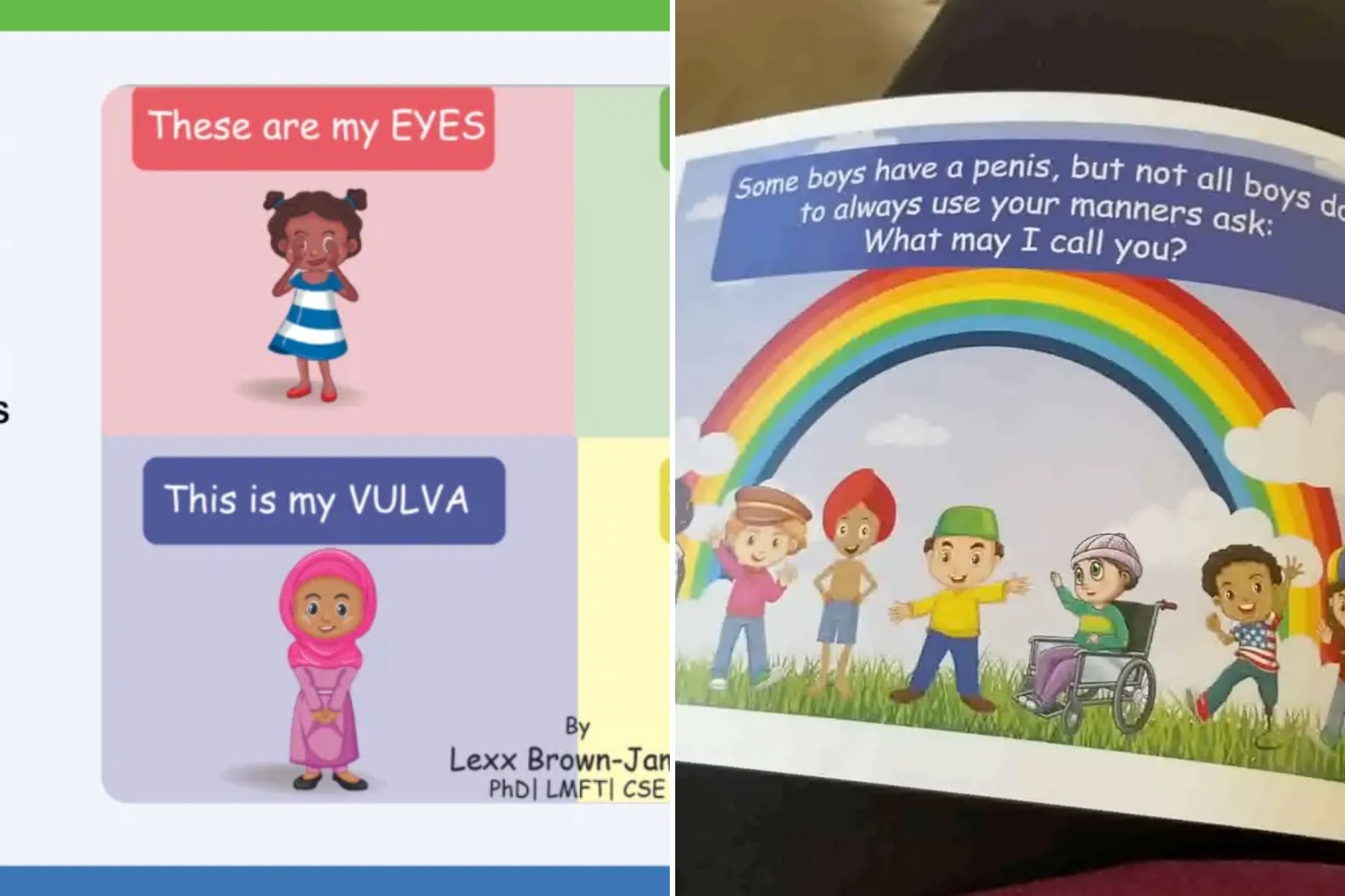
New York City public school students as young as 4 are learning the ABCs of HIV in kindergarten, including through a book that identifies vulvas and penises, The Post has learned.
The city’s HIV/AIDS curriculum, which was revamped in September, centers lessons for 4- and 5-year-olds around a book called “These are My Eyes, This is My Nose, This is My Vulva, These are My Toes,” by Lexx “The Sex Doc” Brown-James, a St. Louis-based sex educator and therapist.
“Some girls wear dresses, some girls won’t, some girls have vulvas and some girls don’t,” the book says. “Some boys have a penis but not all boys do. To always use your manners, ask ‘What may I call you?,’” it continues.
“EJ is not a girl or a boy. So not he or she. To show you care, always use ‘they,’ ‘them’ and ‘theirs.’”
The lessons, which include a video of the book created and adapted by Brown-James specifically for NYC Public Schools, lay the foundation to learn about the human immunodeficiency virus — which can lead to AIDS — down the road.
The K-12 program, “Growing Up and Staying Safe: New York City K-12 HIV Education Curriculum,” is the city’s response to state-mandated HIV/AIDS lessons, and was funded in part by the Centers for Disease Control and Prevention.
“It’s beyond inappropriate,” said Natalya Murakhver, an Upper West Side mom and co-founder of the nonprofit Restore Childhood.
“This is graphic content that, if it’s introduced, I think it should be introduced in the home, not in the schools,” she added.
One Brooklyn mom of a kindergartener received notice last week that her 5-year-old would be getting the lessons — and was given no option to opt-out.
“It makes me nervous because, if they’re going into this much detail in kindergarten, what is it going to be like by third, fourth grade?” she said.
In first grade, kids learn that HIV can be transmitted through the blood or body fluids of an infected person.
While COVID is “easy to pass,” HIV is “harder to pass,” according to the lesson plans and slide decks provided to teachers through the city’s WeTeachNYC portal.
Second graders learn about blood and medication and by third grade, students are expected to be able to “summarize what HIV is and identify ways it can and cannot be passed.”
Fourth graders learn that HIV can specifically be passed through unclean needles used for drugs or tattoos and sexual contact.
Throughout March, credit-eligible, “culturally responsive” webinars were offered to teachers through the Office of School Wellness Programs. They included “HIV Education: Exploring Curriculum Concepts and Skills” and “HIV Education: Strategies for Effective Instruction.”
The DOE announced the revamped K-12 curriculum in September, making the first update to the material since 2012.
“This new HIV curriculum incorporates direct feedback from our educators and student focus groups, is grounded in equity and anti-bias, and is aligned with Social-Emotional Learning Competencies,” schools Chancellor David Banks said at the time.
It reflects a “commitment to student health and well-being, inclusivity and respect, and access to quality sexual health education,” Banks said.














